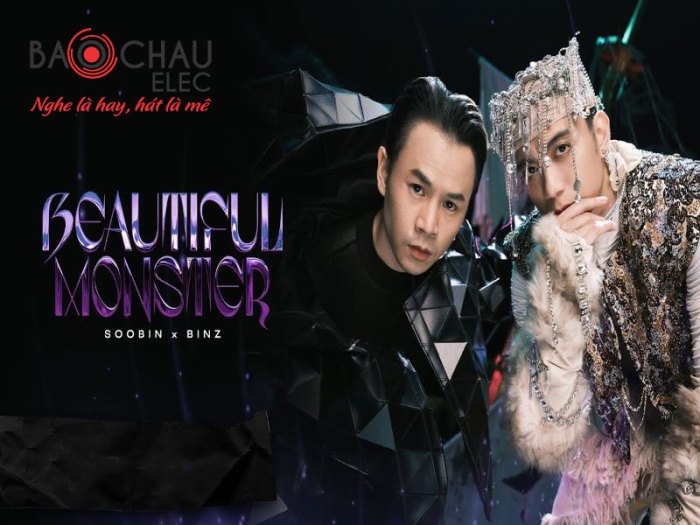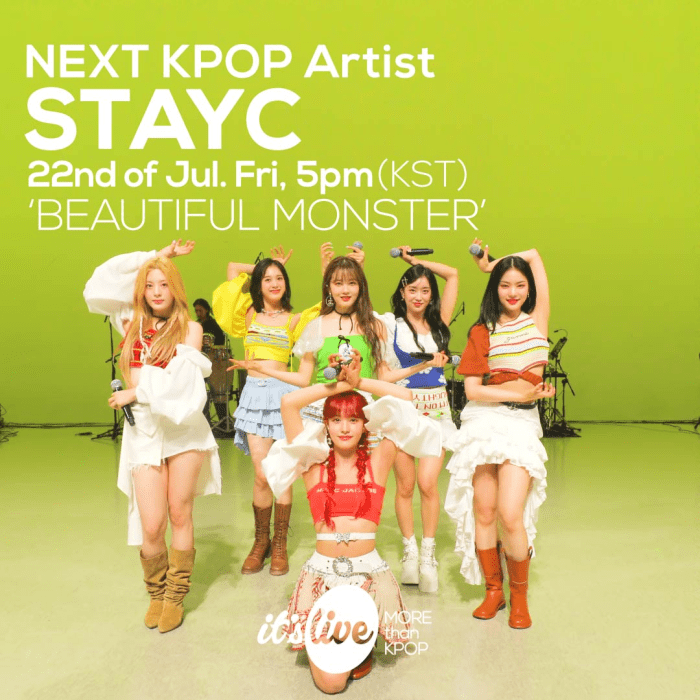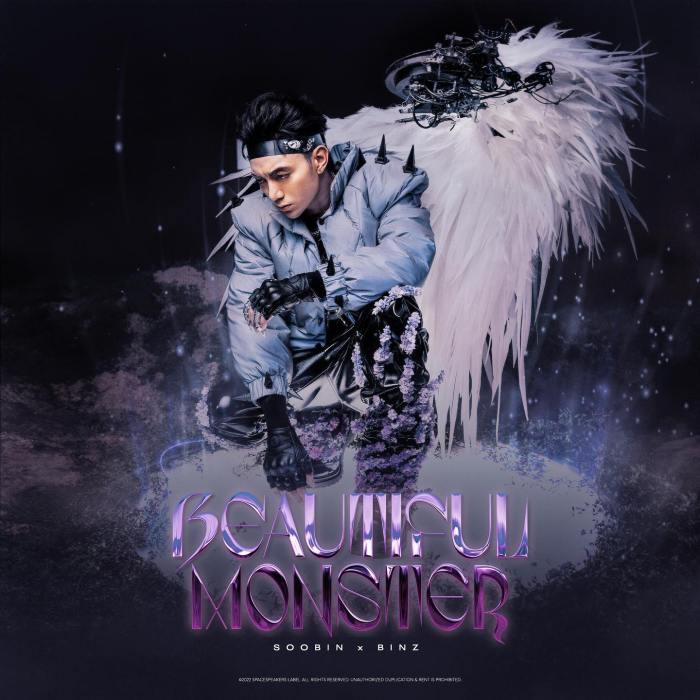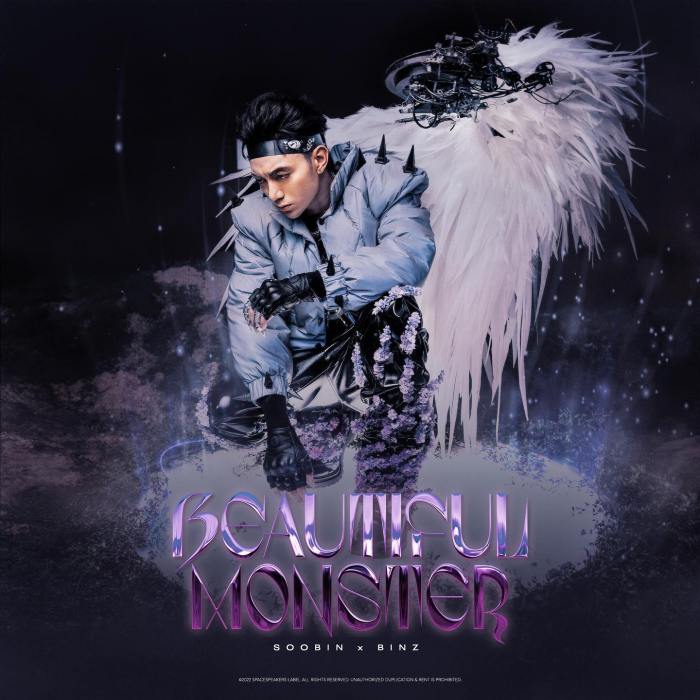Ever wondered what happens when the captivating allure of beauty clashes with the chilling presence of monstrosity? That’s the heart of the “Beautiful Monster” archetype, a fascinating paradox that’s haunted our imaginations for centuries. From the seductive sirens of Greek mythology to the enigmatic allure of a vampire, this archetype explores the duality of human nature and the complexities of perception.
Think of the “Beautiful Monster” as a puzzle, a blend of captivating aesthetics and chilling secrets. It’s a concept that challenges our notions of what’s considered beautiful and what’s considered monstrous, blurring the lines between what we find appealing and what we fear.
It’s a story that asks us to confront our own biases and prejudices, forcing us to consider the potential for beauty within the seemingly monstrous, and vice versa.
The Paradox of Beauty and Monstrosity

The concepts of beauty and monstrosity are often seen as polar opposites, yet throughout history and culture, they have intertwined in a captivating and complex dance. This paradox is a testament to the human fascination with the grotesque, the unsettling, and the way it can coexist, and sometimes even enhance, the beautiful.
Examples of Beauty and Monstrosity in Literature and Mythology
The inherent tension between beauty and monstrosity is explored in countless works of literature and mythology. Here are some prominent examples:
- The Siren: These mythical creatures are known for their enchanting voices and irresistible allure, yet they are also depicted as monstrous beings who lure sailors to their deaths. Their beauty is a deadly trap, highlighting the deceptive nature of appearances.
- The Sphinx: This creature, with the body of a lion and the head of a woman, poses riddles to travelers, devouring those who fail to answer correctly. While possessing a captivating beauty, the Sphinx’s monstrous nature serves as a symbol of knowledge and wisdom, but also of danger and death.
- The Medusa: In Greek mythology, Medusa was once a beautiful woman who was transformed into a monstrous creature with snakes for hair and the power to turn anyone who looked at her into stone. Her story explores the themes of beauty, betrayal, and the destructive power of jealousy.
Exploring the “Beautiful Monster” Archetype
The “beautiful monster” archetype is a fascinating paradox that has captivated audiences for centuries. This captivating figure embodies both alluring beauty and unsettling monstrosity, blurring the lines between what is considered desirable and repellant. From ancient myths to contemporary media, this archetype has consistently intrigued and challenged our perceptions of beauty and monstrosity.
Prominent Examples of the “Beautiful Monster” Archetype
The “beautiful monster” archetype has been explored in various forms of media, with each iteration offering a unique perspective on this complex duality. Here are some notable examples:
- Literature:In Mary Shelley’s “Frankenstein,” the titular creature, despite his grotesque appearance, possesses a profound intellect and a longing for connection. His physical monstrosity is juxtaposed with his internal beauty, making him a sympathetic figure despite his terrifying nature.
- Film:The character of Darth Vader in the “Star Wars” franchise is a classic example of a “beautiful monster.” His imposing black armor and menacing mask hide a tormented soul and a complex backstory. His imposing appearance is both alluring and terrifying, captivating audiences with his power and tragedy.
- Music:The lyrics of “Beautiful Monster” by Imagine Dragons evoke the duality of this archetype. The song explores the idea of embracing one’s flaws and finding beauty in the unconventional. It encourages listeners to see beyond superficial appearances and embrace their inner “monster.”
Portrayal of the “Beautiful Monster” Across Cultures and Time Periods
The “beautiful monster” archetype has transcended cultural and temporal boundaries, appearing in various forms across different societies and time periods. Here are some examples:
- Ancient Greek Mythology:The Minotaur, a creature with the head of a bull and the body of a man, is a classic example of a “beautiful monster.” Its terrifying appearance is juxtaposed with its tragic fate, making it a complex and enduring symbol of human duality.
You know how sometimes you feel like a beautiful monster, a little bit wild and a little bit beautiful? That’s exactly the vibe you get from the Black Background Flower Coloring Book (Coloring Books for Adults). These intricate designs are like a blank canvas for your inner wild child, letting you express your unique style and creativity.
It’s a reminder that even the most beautiful things can have a little bit of darkness within them, and that’s what makes them so fascinating.
- Japanese Folklore:The Yuki-onna, a snow woman with ethereal beauty and the power to freeze people to death, is a fascinating example of a “beautiful monster.” Her captivating appearance is a facade for her deadly nature, blurring the lines between beauty and danger.
- Modern Literature:In “The Picture of Dorian Gray” by Oscar Wilde, the protagonist, Dorian Gray, is a beautiful young man who sells his soul for eternal youth and beauty. His beauty becomes a curse, as his inner darkness manifests itself in his outward appearance, transforming him into a monstrous being.
Psychological and Societal Implications of the “Beautiful Monster” Archetype
The “beautiful monster” archetype has profound psychological and societal implications. It challenges our preconceived notions of beauty and monstrosity, forcing us to confront the complexities of human nature.
- The Nature of Beauty:The “beautiful monster” archetype suggests that beauty is not merely a matter of physical appearance. It can be found in the unconventional, the flawed, and even the monstrous. This challenges our societal standards of beauty, suggesting that true beauty lies in the inner qualities of an individual.
You know how they say “beauty is in the eye of the beholder?” Well, sometimes, those “beautiful monsters” are just our own brains playing tricks on us. But hey, don’t let those negative thoughts get you down! Check out Own Your Mind A No-BS Manual to Mastering Mental Health for some serious mental health hacks.
You might just discover that those “monsters” aren’t so scary after all, and you’re totally rocking that inner badass.
- The Power of Perception:The archetype also highlights the power of perception. Our perception of beauty and monstrosity is subjective and influenced by our cultural and personal biases. What one person finds beautiful, another may find monstrous, emphasizing the fluidity and subjectivity of these concepts.
- The Complexity of Human Nature:The “beautiful monster” archetype reminds us that human nature is complex and contradictory. We are capable of both great love and great cruelty, beauty and ugliness, compassion and indifference. This archetype forces us to confront the duality of our own nature and the potential for both good and evil that exists within us.
Okay, so “Beautiful Monster” is totally a vibe, right? It’s like, the ultimate duality – fierce and beautiful all at once. And when you’re digging into the whole “Beautiful Monster” concept, you gotta think about the deeper meaning behind it.
That’s where Exploring Art History A selection of vital questions about art comes in. It’s like, how do artists throughout history capture that wildness and grace? It’s all about the questions, y’know? So, next time you’re feeling that “Beautiful Monster” energy, remember it’s not just about the look, it’s about the story behind it.
The Impact of the “Beautiful Monster”

The “beautiful monster” archetype has transcended its origins in mythology and literature to permeate various aspects of modern culture, influencing art, fashion, and even our understanding of social norms. This captivating duality of beauty and monstrosity has left an indelible mark on how we perceive ourselves and the world around us.
Impact on Art, Fashion, and Social Norms
The “beautiful monster” archetype has had a profound impact on art, fashion, and social norms. It has challenged traditional notions of beauty and fostered a greater appreciation for diversity and inclusivity.
| Aspect | Impact | Examples |
|---|---|---|
| Art | The “beautiful monster” archetype has inspired artists to explore unconventional beauty and challenge traditional aesthetics. |
|
| Fashion | The “beautiful monster” archetype has influenced fashion trends, leading to the acceptance of unconventional beauty and the celebration of individuality. |
|
| Social Norms | The “beautiful monster” archetype has challenged traditional social norms, promoting acceptance of diversity and encouraging individuals to embrace their uniqueness. |
|
Consequences of Embracing or Rejecting the “Beautiful Monster” Archetype
Embracing or rejecting the “beautiful monster” archetype can have significant consequences for individuals and society as a whole.
You know that feeling when you’re totally rocking a fierce outfit and everyone’s giving you the side-eye? That’s kind of like “Beautiful Monster,” a track that’s gonna make you feel like you can conquer the world, even if it’s a little…different.
You can Download And Listen Here and let the beat take you on a wild ride. “Beautiful Monster” is all about embracing your unique style and owning your own power, so get ready to unleash your inner rockstar!
- Embracing the “Beautiful Monster”: Embracing the “beautiful monster” archetype can lead to greater self-acceptance, a more inclusive society, and a broader understanding of beauty.
- Rejecting the “Beautiful Monster”: Rejecting the “beautiful monster” archetype can perpetuate societal norms that exclude those who don’t conform to traditional standards of beauty, leading to discrimination and prejudice.
The Journey of a “Beautiful Monster”
“I was born with a face that scared children, and eyes that held the secrets of the night. They called me a monster, but I knew I was more than that. I was a creature of beauty and darkness, a paradox of nature, a beautiful monster.”
The “beautiful monster” archetype can be seen in the journey of many fictional characters. Take, for instance, the story of a young woman named Anya, born with a rare genetic condition that gave her a unique appearance. Anya’s physical difference made her an outcast in her small town, where she was ostracized and ridiculed.
She was often called “monster,” a label that she internalized and believed.However, as Anya grew older, she began to realize that her difference was also her strength. She discovered that her unique appearance was a source of fascination and intrigue to others, and she learned to embrace her beauty, flaws and all.
Anya became an artist, using her experiences as inspiration for her work. Her art, a blend of the beautiful and the monstrous, challenged traditional notions of beauty and sparked conversation about diversity and inclusivity. Anya’s journey serves as a reminder that beauty is subjective and that true beauty lies in embracing our unique qualities, even those that may seem monstrous to others.
End of Discussion

The “Beautiful Monster” is a captivating enigma, a reflection of our own internal struggles and the world around us. It forces us to question our assumptions about beauty and monstrosity, reminding us that the most captivating figures are often those who defy categorization.
Whether we embrace the archetype or fear it, the “Beautiful Monster” leaves a lasting impact, challenging us to explore the complex tapestry of human nature and the power of perception.
Question & Answer Hub
What are some real-world examples of the “Beautiful Monster” archetype?
Think of figures like Marilyn Monroe, who embodied both beauty and a tragic life, or the complex portrayal of the Joker in Batman comics, who is both terrifying and strangely alluring. These characters challenge our notions of beauty and monstrosity, making them both compelling and unsettling.
How does the “Beautiful Monster” archetype relate to our own perceptions of beauty?
The “Beautiful Monster” challenges us to think about how we define beauty. Is it purely physical? Or can it encompass aspects of personality, intelligence, or even darkness? This archetype forces us to consider the complexity of beauty and its subjective nature.
What are some of the ethical implications of the “Beautiful Monster” archetype?
The “Beautiful Monster” can be used to explore themes of prejudice, discrimination, and the dangers of judging others based on appearances. It reminds us that what we consider monstrous is often based on our own biases and fears.

